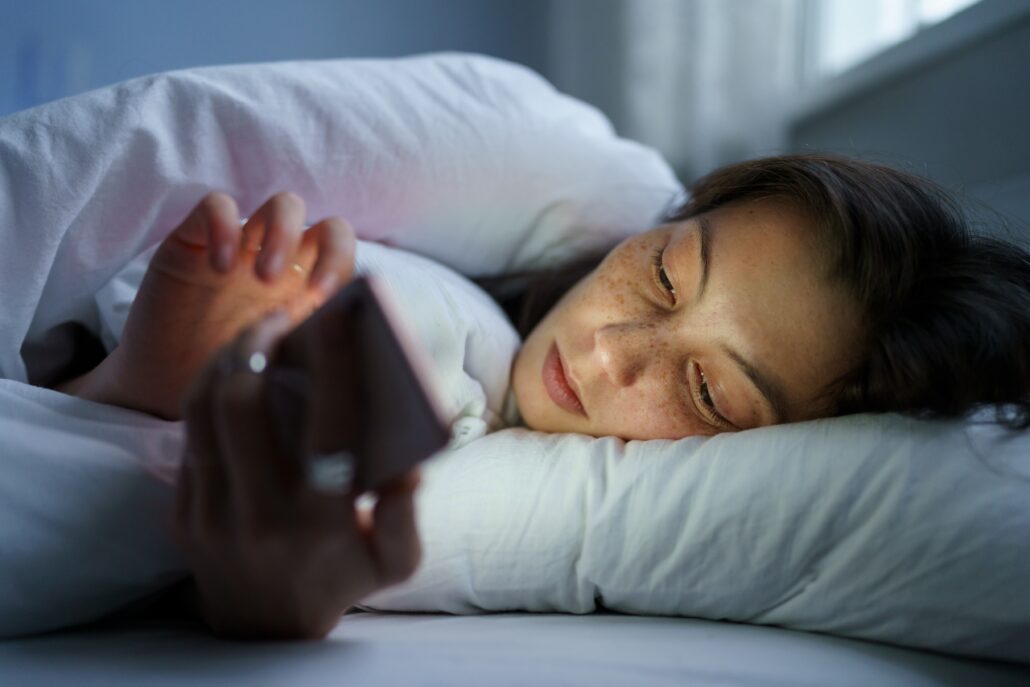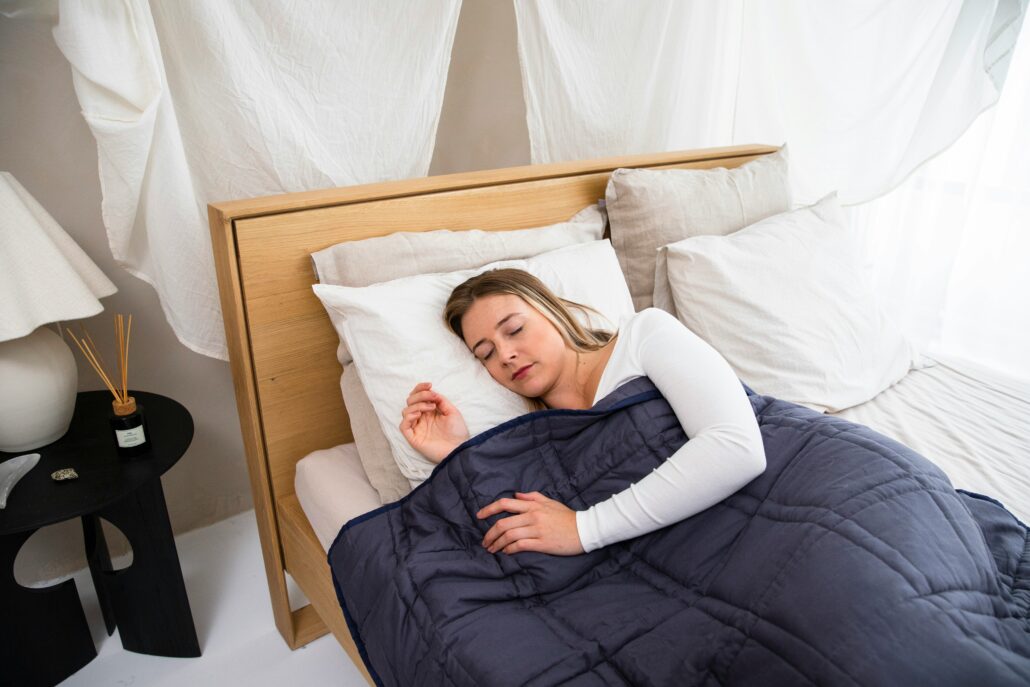Busting 9 Common Sleep Myths: What Science Says About Sleep
Plus, what do you do if you fall victim to the tall tales?
The sleep landscape is full of myths that can obscure our understanding of an essential component of our health and well-being. They run the gamut from how to make up for lost sleep or sleeping too much to the temperature of your bedroom and eating spiders (yikes!)
In this blog, we’ll delve into some of the most prevalent sleep myths and examine the scientific evidence behind them. This knowledge will empower you to dispel misconceptions and foster healthier sleep habits, giving you a deeper understanding of the truths about sleep and its importance in your daily life!
Myth #1: Weekends are for Catching Up on Sleep
According to a Better Sleep Council survey, 43% of American adults think they can catch up on lost sleep over the weekend. This popular belief is, in fact, false. Getting less sleep during the week means you could be sleep deprived, a condition that adds to your sleep debt. As hard as you try, you can’t repay sleep debt by snoozing more on the weekend.
Sleep deprivation can cause health problems such as obesity or high blood pressure, cognitive deficits like mood disorders or memory loss, and decreased work or school performance. Trying to catch up on sleep during the weekend can help you overcome short-term drowsiness, but it doesn’t erase the damage caused by sleep deprivation. Instead of sleeping extra on the weekend, try these tips to reduce your chances of becoming sleep deprived:
- Keep your bedtime and wake-up time consistent all week.
- Take short 15 to 20-minute naps in the late morning or afternoon.
- Record your sleep patterns in a journal, like a diet or exercise tracker.
- Reframe your relationship with sleep to make it a priority.
Myth #2: The More Sleep the Better
Do you get notifications about your sleep duration on your smartwatch when you wake up? Research shows that adults need seven to nine hours of sleep each night. The handy feature on your watch can record the total amount of time you spend in each of the five stages of your sleep cycle so you can better understand how you sleep:
- Stage 1: Easy to awaken; Common to feel like you’re falling if you wake up.
- Stage 2: Light sleep; Heart rate slows and body temperature decreases.
- Stages 3 and 4: Deep sleep stages; REM can occur; Being awakened can lead to disorientation.
- Stage 5: Dreaming and REM; Eye movement, increased respiration rate, and brain activity occur.
Waking up too often during the night can disrupt your sleep stages and reduce the time you spend in deep or REM sleep. These sleep cycles are crucial for sleep quality, which is uninterrupted, refreshing rest that rejuvenates you. Good quality sleep is essential for your overall health and well-being, so it’s important to prioritize it.
Oversleeping is no better. If you sleep too much, you risk being in a constant state of grogginess. Constant oversleeping can also be a sign of health problems, including:
- Sleep apnea
- Anemia
- Hypothyroidism
- Diabetes
- Heart disease
Myth #3: It’s Good to be Able to Fall Asleep Anytime, Anywhere
Nodding off as soon as your head hits the pillow, snoozing during a movie, or frequently sleeping on public transportation might seem like a good thing, but it’s not. Sleep scientist and assistant professor Rebecca Robbins of Medicine at Harvard Medical School says that it takes a healthy, well-rested person about 15 to 20 minutes to fall asleep. Falling asleep as soon as the opportunity arises can indicate sleep deprivation and increase your sleep debt.
Sleepiness occurs when adenosine levels build up in your brain throughout the day. If you’re sleep deprived, your body and brain might try to pay off sleep debt during the day, reducing adenosine levels that help you get to sleep at night. Good sleep quality lowers adenosine at night, so you wake up feeling refreshed. To better regulate your adenosine level:
- Exercise in the morning or afternoon
- Avoid long daytime naps
- Avoid caffeine at least two hours before bedtime
Myth #4: You Need Less Sleep as You Age
Does an older person in your life frequently take an afternoon nap? They’re likely making up for sleep lost during the night. The amount of sleep you need as you age doesn’t change, but your sleep patterns can. Older adults might wake up more frequently at night to use the bathroom or take medications that affect sleep. Short naps can help make up for the sleep lost during the night.
A study published by the Journal of American Geriatrics Society found that nearly 60% of adults over age 65 reported napping after lunch for about one hour. From the data collected, scientists determined that a 30 to 90-minute nap, which falls within the ‘golden’ timeframe, is ideal for a quick snooze. Participants who napped within this timeframe had better word recall, a sign of good memory, and were better at figure drawing, a sign of good cognition.
Researchers also determined that napping for longer than 90 minutes, or what type called “a second sleep,” signals poor nighttime sleep quality, which can lead to cognitive problems.
SURVEY: 43% of U.S. Adults Say the Temperature in the Bedroom Causes Poor Sleep.
Myth #5: Your Bedroom Temperature Should be Warm
Don’t sweat it if you prefer a cool bedroom at night! Keeping your bedroom thermostat set the same day and night is not conducive to good sleep. Your body temperature drops as your bedtime approaches, and a bedroom that is too warm can keep you from falling and staying asleep.
Instead, research published in Sleep by Oxford Academic shows that the ideal bedroom temperature is between 65 and 70°F. A temperature 1°F higher can decrease sleep efficiency, increase sleep duration, and make it more challenging to wake up in the morning.
How do you find the right temperature? It can take a little trial and error. Start with your bedroom temperature around 65°F. Adjust it higher by 1°F each night until you find a comfortable setting for your sleep preference. Be sure to include your partner in the experiment if you sleep in the same bed!
SURVEY: 40% of U.S. Adults Say Their Partner’s Snoring Causes Poor Sleep.
Myth #6: Snoring is Not a Problem
Does your partner’s snoring keep you up at night? Although occasional snoring is harmless, very loud or frequent snoring can be a sign of a serious medical condition—sleep apnea.
People with sleep apnea stop breathing for a few seconds—or minutes—as they sleep, and breathing pauses can occur several times per hour. Each pause disrupts the sleep cycle and can cause you to wake up or remain in sleep stages one or two instead of reaching deep or REM sleep. Excessive daytime tiredness can be a sign of sleep apnea, and over time the condition can lead to an increased risk for high blood pressure, stroke, and diabetes.
Be sure to consult a doctor if you suspect that someone in your family has sleep apnea.
Try these tips if a physician or sleep specialist determines that snoring is not due to sleep apnea:
- Use a humidifier in the bedroom
- Take a hot, steamy shower before bed
- Lubricate your nasal passages with sesame oil or ghee (clarified butter)
- Sleep on your side
- Drink peppermint, chamomile, or turmeric tea before bedtime
Myth #7: You Should Always Go to Bed When You Feel Tired
This myth is less about napping and more about feeling tired a lot of the time. Excessive tiredness can occur when your body’s circadian rhythm—your body’s 24-hour cycle that controls sleep and normal body processes—is interrupted. Disturbances in circadian rhythm are commonly caused by going to bed and waking up at irregular times.
You can regulate your circadian rhythm by establishing a bedtime routine for your family. Consistency is key because it helps ensure you can fall asleep easier, get enough sleep, and wake up refreshed in the morning.
To create a bedtime routine, start by determining what time each family member needs to wake up. For example, if your teenager requires 8 to 10 hours of sleep and needs to get up at 6:30 a.m., set their bedtime between 8:30 p.m. and 10:30 p.m.
Next, add 30 minutes to an hour for relaxing, screen-free activities to help them wind down and get ready for bed. Some suggestions for bedtime activities include:
- Gentle stretching or yoga
- Guided meditation
- Deep breathing exercises
- Family games
- Journaling
- Listening to relaxing music
- Prepping for the next day
SURVEY: 28% of U.S. Adults Say Mattress Quality, Age, and/or Firmness Causes Poor Sleep.
Myth #8: Your Mattress Needs Replaced Every 10 Years
An astonishing 66% of American adults believe this myth is true. In reality, you should evaluate your mattress every seven years to determine if it should be replaced. Consider these signs that it’s time for a new mattress:
- Waking up stiff, numb, achy, or in pain.
- Sleeping better somewhere other than your bed.
- Visible signs like holes, tears, stains, or damage.
- Frequent daytime tiredness.
When you replace a mattress, be sure to replace the box springs, too. Some brands won’t cover a mattress if it isn’t placed on top of a new box spring.
Take the Better Bed Quizzz to Find Your Mattress Type!
Myth #9: You Eat Spiders in Your Sleep
We’ll add this last one just for fun! No, you don’t eat a certain number of spiders yearly while sleeping! Scientifically, no evidence of this phenomenon exists, and it’s unlikely that it would actually happen because spiders typically scurry away from humans. More than likely, the myth about eating spiders is because 2.7 to 11% of people suffer from arachnophobia—the fear of spiders.
Sleep Myths Debunked!
Understanding the truth about sleep is essential for cultivating robust sleep habits and enhancing our overall well-being. By confidently debunking common myths, we empower ourselves to prioritize sleep and acknowledge the critical role quality rest plays in our health. Emphasizing consistent sleep schedules, recognizing individual sleep needs, and adopting a healthy lifestyle are pivotal in achieving the restorative sleep our bodies crave.
As we navigate the complexities of our sleep patterns with science as our guide, we can make informed decisions that dramatically improve both our nightly rest and our physical and mental health. Prioritizing sleep isn’t just a personal choice; it’s a fundamental pillar of leading a productive and vibrant life. Let’s embrace these facts and elevate our relationship with sleep, setting the stage for a healthier, more dynamic future!



